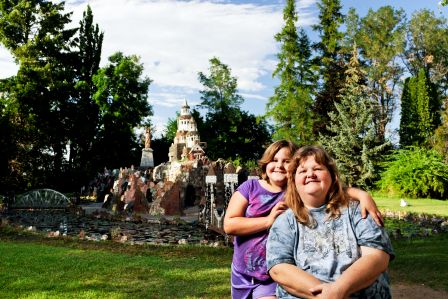 When I lived in Moscow in the early 90s, it was a drab, gray city of concrete, dotted with the few churches that had survived Stalinism. The run down onion domes stood, dwarfed by the dictator’s giant wedding cake architecture. I couldn’t wait to leave.
When I lived in Moscow in the early 90s, it was a drab, gray city of concrete, dotted with the few churches that had survived Stalinism. The run down onion domes stood, dwarfed by the dictator’s giant wedding cake architecture. I couldn’t wait to leave.
Fast forward to 1998, the last years of Boris Yeltsin, when money was multiplying like kittens in the pockets of various mobsters. On a day trip to Moscow from Dubna, where I was working, I noticed that 1990s versions of the historic churches now towered over the city, their golden domes sparkling in the mid summer sun.
Combine that (albeit expensive) flip-flop with the loosening of artistic freedoms, and the capital had begun to flourish. Indie music, fine contemporary art, modern literature and cinema were all part of the scene.
For me, this presents one of the greatest arguments as to why history and heritage are important to art and artistic expression.
When I look at the arts, heritage and humanities as a quirky family called “Culture,” Heritage may be the serious older sibling to the colorful younger sib, Arts, and the sensitive Middle, Humanities.
And what does the older sibling do? He protects his kid sisters and brothers. He makes sure the world is a safe place for these younger spirits to come into full expression.
Let me again invoke Soviet Russia: the Soviets were masters of political forgetting. Once the churches had been razed in the 1930s, the citizens began to forget their aesthetic past.
As late as the 1980s, artists, filmmakers, writers, musicians were contracted to make Communist art – and imprisoned if they refused. Clothing and furniture design became functional (and ugly) and, in the face of famine (and later bread lines), food ceased to be a sensory experience. In this cultural wasteland, the classical arts stood as marvels. Permitted by the state, they were widely accessible, but they were also like Hitler’s vision for the Old Jewish Cemetery in Prague, a monument to an extinguished race. New creativity (modern dance, music, literature, art) had been squashed by a state-sanctioned lack of reverence, respect, or even acknowledgment of the country’s rich cultural heritage. This belligerent dismissal of history paved a long and wide path to artistic oppression. So, to flesh out my metaphor: unable to defend her little brothers against an abusive parent, the big sister crumpled and all of them were beaten. For 75 years.
The Oregon Cultural Trust supports the arts, heritage, and humanities. But sometimes the three communities struggle to find common ground. We must remember that we are all connected. When we save an historic building, when we archive and catalog the writings of the explorers, pioneers, and homesteaders, when we listen to a Native American storyteller, we are making sure those resources will be around for our kids and their kids to enjoy. We are giving them the contexts for their lives from which creativity springs. We are insuring that they will have access to knowledge and enough self empowerment to make something of it. We are defending their freedom from oppression and the likely hood that they will grow, advance and become their best, brightest, most passionate selves.
– Meryl Lipman, Trust Communications Manager